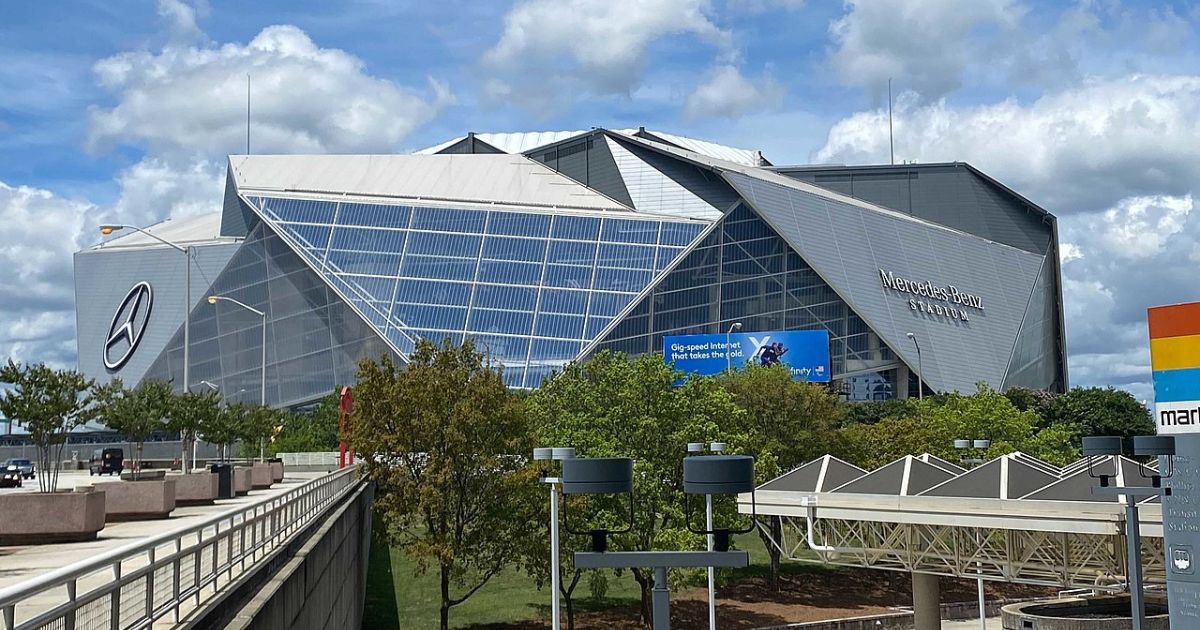
This is first in a series covering public transportation preparations for the 2026 FIFA Men’s World Cup. For this post, we are starting with a US city that has experience hosting large scale sports events: Atlanta, home to the 1996 Olympics.
Excepting an unwelcome kiss, this summer’s 2023 FIFA Women’s World Cup was a huge success, drawing millions of fans to women’s soccer. Now that it’s over, cities are beginning to prepare for the next massive event in soccer, the FIFA Men’s World Cup. It’s coming to North America in 2026, hosted across 16 cities in the US, Mexico, and Canada, with an expected 5.5 million fans attending.
The 2026 World Cup is expected to be a major economic boost for host cities, and transportation preparations are an important part of ensuring that the tournament is a success. Cities hosting the matches are already in the process of planning public transportation system expansions to make it easier for fans to get to and from the games without driving. At this year’s Women’s World Cup, hosted in nine cities across Australia and New Zealand, every venue had some form of train, light rail, and/or bus service to the games. Residents were warned far in advance that driving to the games was not an option due to very limited parking. The planning was informed by real life experience: when Sydney hosted the 2000 Olympics, at the last minute hundreds of members of the Australian Defence Force were needed to bus attendees around the venue.
We’ve certainly got better at dealing with big events. We learnt a lot about warning people ahead of time to expect the worst, and then people will change their behaviour – if they’re given enough notice to do it.
– Geoffrey Clifton, senior lecturer in public transport and logistics, the University of Sydney
In preparation for 2026, roads and highways in host cities will be getting some upgrades, including widened lanes, new traffic signals, and improved signage. Transportation planners are also working with ride-hailing companies like Uber and Lyft to ensure that they are prepared to handle the increased demand during the games. But it’s hard to imagine that these improvements will be enough to keep traffic flowing because fans won’t just be at the Games. They’ll also need transportation to and from tourist venues, fan festivals, hotels, and restaurants. The goal is to make it as easy as possible for fans to get around each host city. Planners hope to create a smooth and efficient transit experience for the tournament by expanding public transportation and introducing new transportation options.
Why is Public Transit Important for the World Cup?
FIFA World Cup events are not simply about the game of soccer. They are an essential way for a city to introduce itself to the world as a cosmopolitan powerhouse. Atlanta, for example, emerged from the 1996 Olympics as a major US city with new public transportation, infrastructure, and economic investments. According to Dan Corso, President, Atlanta Sports Council at Metro Atlanta Chamber, the success in 1996 – and the presence of public transit directly linked to Hartsfield-Jackson International Airport – were selling points for FIFA when choosing host cities. He said, “You have to make sure you have the infrastructure, because, again, moving people around is important. Places to play, places to stay, is important…. we are early [in the planning process] even though three-plus years is going to go very fast.”
For Atlanta, transportation should be easier this time. That’s because the games will be held in a single arena, the Mercedes Benz stadium, not spread across the metro area as was the case during the Olympics. However, there is still work to be done. The city’s largest transit hub, Five Points, is scheduled to be completely renovated. And there are several large-scale developments in the works for downtown areas like Underground Atlanta and the collection of rail lines and empty lots known colloquially as the Gulch. Even if these are completed on time, it will take a lot more to make a city that is not known for its walkability an attractive venue for attendees. Atlanta is filled with quirky, charming neighborhoods, but they are spread out across the city which is bisected by major highways I-20 and I-85.
US cities that were not chosen by FIFA this time around should be paying attention to what works – and what doesn’t – in Atlanta. And that includes the fact that transit was a major factor in FIFA’s decisions. It’s a good lesson for smaller cities aspiring to host a World Cup or Olympics in the next two or three decades.
Photo credit: View of Mercedes-Benz Stadium from Centennial Olympic Park Drive by Gatorfan252525 Licensed under the Creative Commons Attribution-Share Alike 4.0 International license.